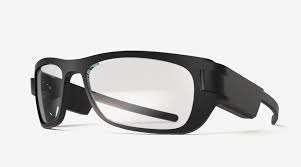
Breaking News
 Trump's FCC Seeks to Strip Even More Local Control Over 5G Rollout
Trump's FCC Seeks to Strip Even More Local Control Over 5G Rollout
 How - and What - Investors Steal from the Public
How - and What - Investors Steal from the Public
 President Trump's 'Mission Accomplished' Moment
President Trump's 'Mission Accomplished' Moment
 Silver and the 401(k) Precious-Metals Rule Change for 2026
Silver and the 401(k) Precious-Metals Rule Change for 2026
Top Tech News
 This tiny dev board is packed with features for ambitious makers
This tiny dev board is packed with features for ambitious makers
 Scientists Discover Gel to Regrow Tooth Enamel
Scientists Discover Gel to Regrow Tooth Enamel
 Vitamin C and Dandelion Root Killing Cancer Cells -- as Former CDC Director Calls for COVID-19...
Vitamin C and Dandelion Root Killing Cancer Cells -- as Former CDC Director Calls for COVID-19...
 Galactic Brain: US firm plans space-based data centers, power grid to challenge China
Galactic Brain: US firm plans space-based data centers, power grid to challenge China
 A microbial cleanup for glyphosate just earned a patent. Here's why that matters
A microbial cleanup for glyphosate just earned a patent. Here's why that matters
 Japan Breaks Internet Speed Record with 5 Million Times Faster Data Transfer
Japan Breaks Internet Speed Record with 5 Million Times Faster Data Transfer
 Advanced Propulsion Resources Part 1 of 2
Advanced Propulsion Resources Part 1 of 2
 PulsarFusion a forward-thinking UK aerospace company, is pushing the boundaries of space travel...
PulsarFusion a forward-thinking UK aerospace company, is pushing the boundaries of space travel...
 Dinky little laser box throws big-screen entertainment from inches away
Dinky little laser box throws big-screen entertainment from inches away
 'World's first' sodium-ion flashlight shines bright even at -40 ºF
'World's first' sodium-ion flashlight shines bright even at -40 ºF
Smart glasses design projects images right into the eye

For now, this is theoretical and somewhat limited in scope. A prototype based on these methods would be capable of rendering texts and icons only. Projecting video into the eye wouldn't be possible at this stage.
"Rather than starting with a display technology and trying to make it as small as possible, we started with the idea that smart glasses should look and feel like normal glasses," research team leader Christopher Martinez of technology research institute Leti explains in a press release. "Developing our concept required a great deal of imagination because we eliminated the bulky optical components typically required and instead use the eye itself to form the image.
"We don't bring an image to the surface of the glass, but instead bring information that is emitted in the form of photons to make the image in the eye."



